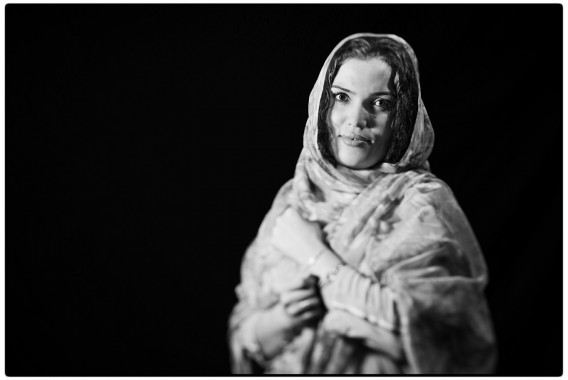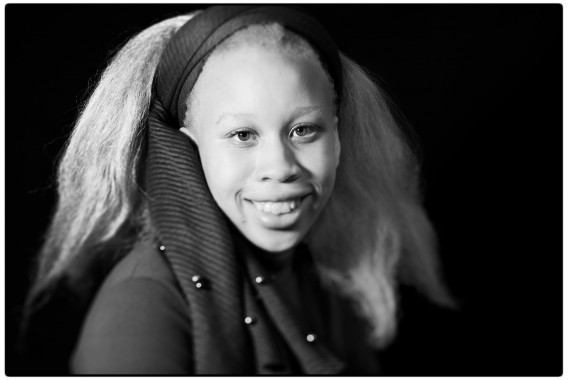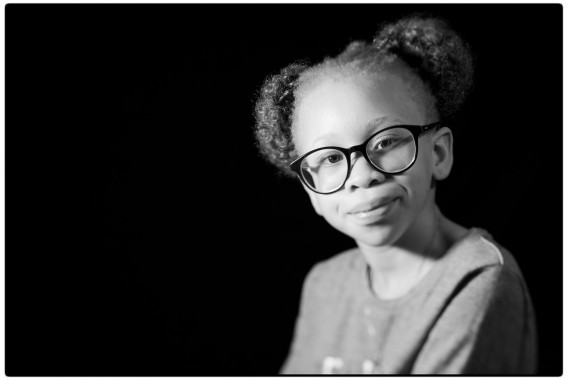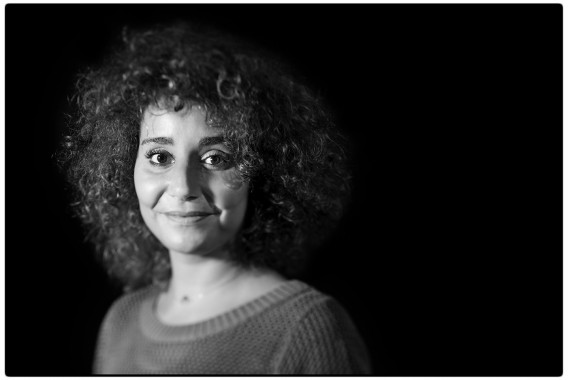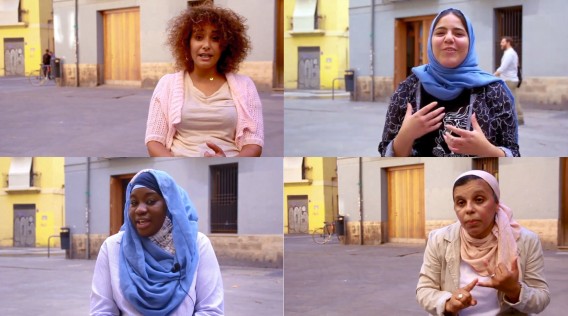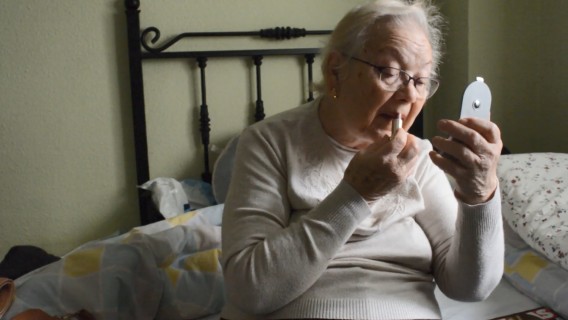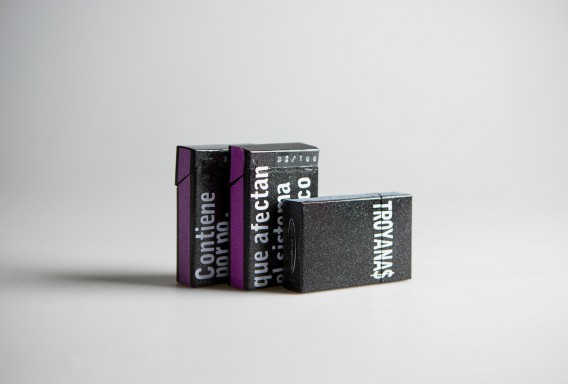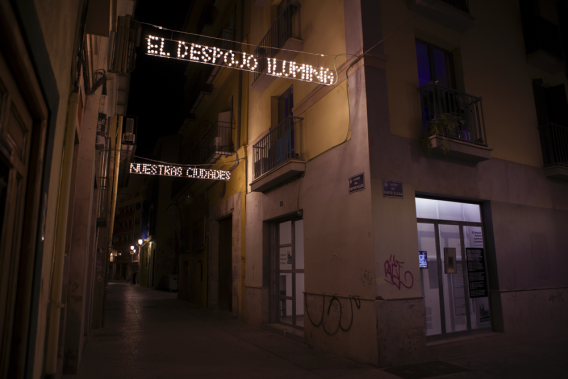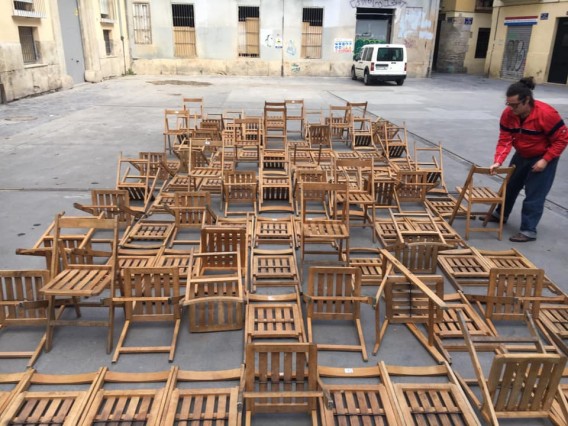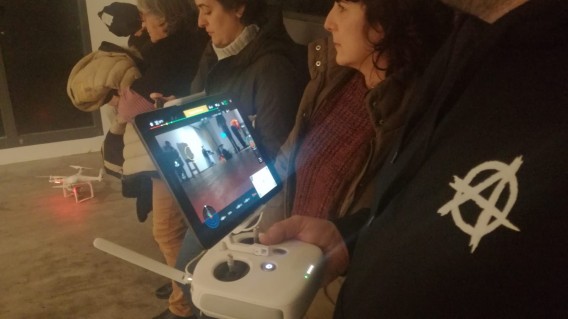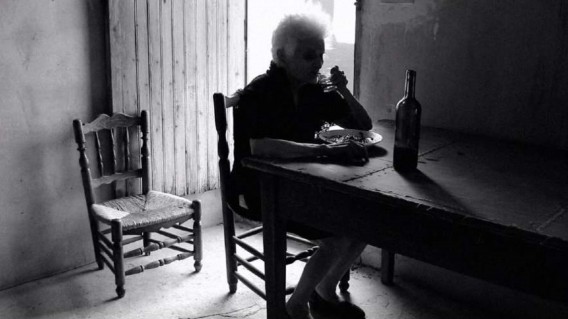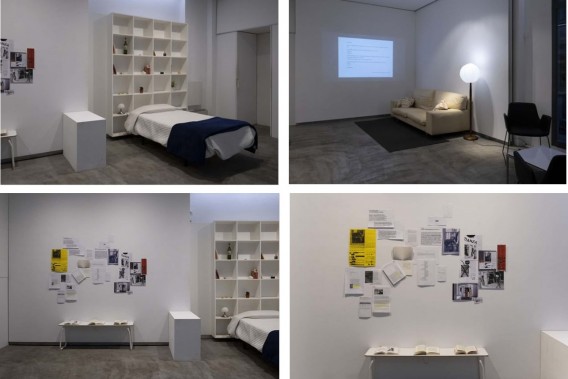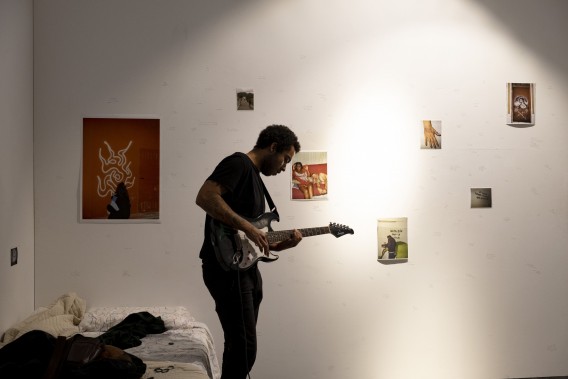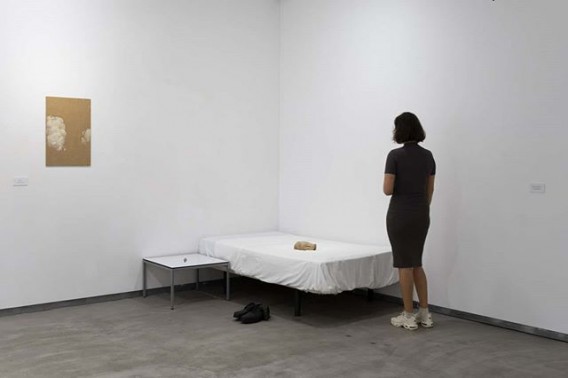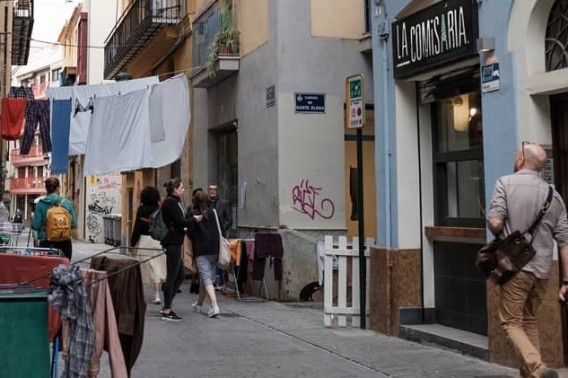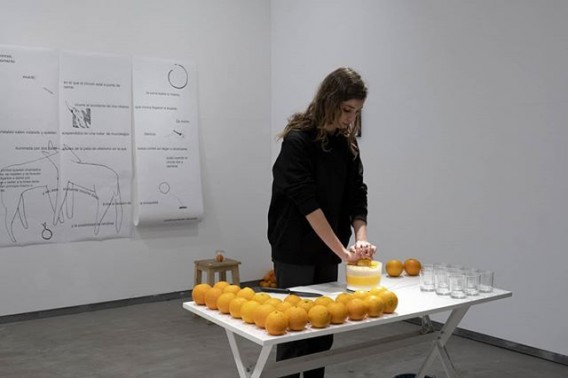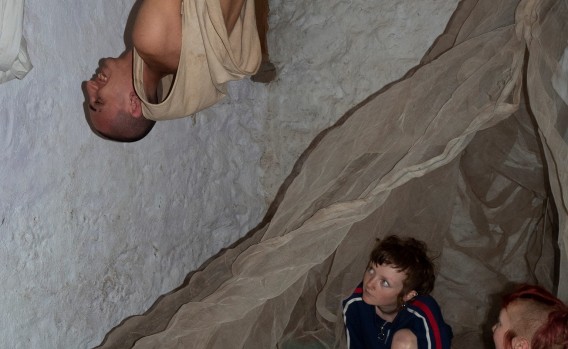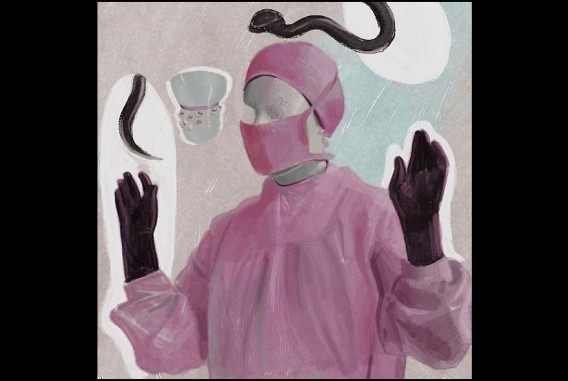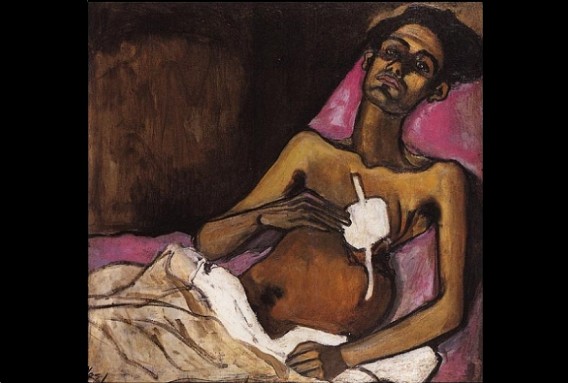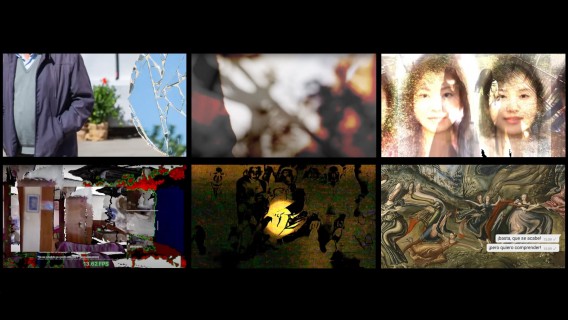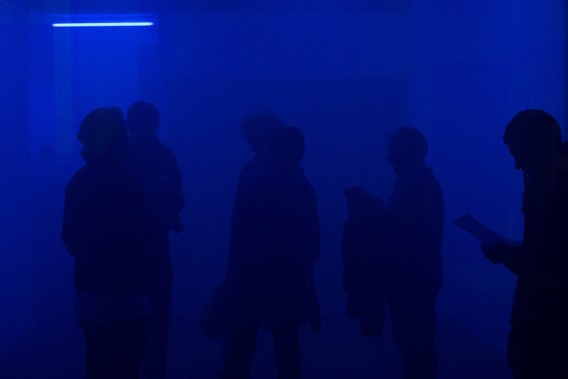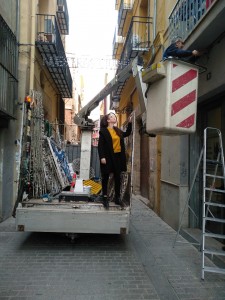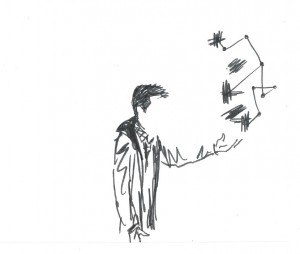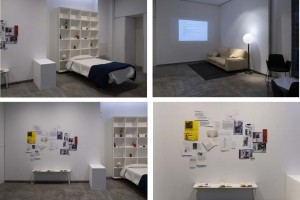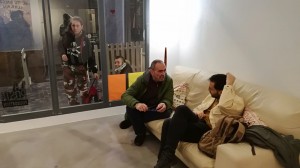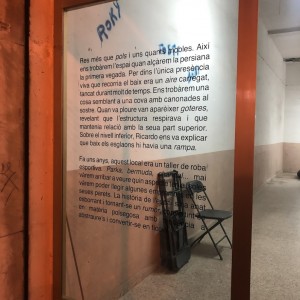The 2019-2020 season has been marked by the emergence of the COVID-19 pandemic. Since the state of alarm was declared on March 14 and the confinement was ordered, nothing has been the same. Even before that, a traumatic event was beginning to be seen as looming over us. Especially here in Valencia, when the City Council announced that the Fallas Festivities were being suspended. Before, news from China. But everything seemed very far away. Then news began to arrive from Milan. That was already there next door. The last activity in La Posta open to the public took place on March 7: “Praise the oranges that grew in the sun and saw you go (you can come to my house whenever you want)”, by Olalla Hidalgo Gómez, around the act of squeeze, within the framework of “L’Apartament”, a program of residencies, actions and exhibitions, developed by the LABi 04 team (Laboratory of thought, creation and dissemination of the image), a project of the Master in Photography, Art and Technique of the Polytechnic University of Valencia in collaboration with La Posta Foundation. But, let’s go in order. Lets start by the beginning.
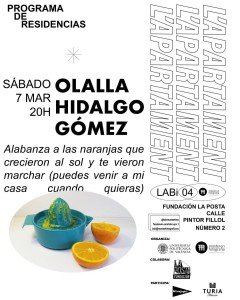
The season began in the summer of 2019, with the preparatory work for the call, workshops, video-interviews, exhibition, which would take place in September-October: “Facing them”, with Muslim women from Valencia. Even before. Because in reality the project began when the previous year the Swiss photographer (although of Spanish descent) Denis Ponté, contacted us carrying under his arm, among other projects, one with an important social impact in the first place where “Face á elle” was developed in Geneva (Switzerland). On that occasion it was commissioned by the Geneva Muslim Women’s Collective, although now in Valencia it was proposed from the beginning as a secular initiative that incorporates all kinds of religious sensibilities within the wide range of the Muslim. We continue, however, putting women in the front line who speak in the first person of their lives, women who, regardless of religious issues, their day to day is that of people who, for the most part, come from other places, and they experience the effects of racialization firsthand. The entities Valencia Acoge and Orriols Convive collaborated with us in the approach to all these people, to obtain their participation.
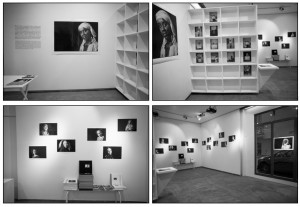
The project “Facing them” was made up of: workshops in which the Muslim women of Valencia invited to participate in it became aware of their role in this process; then an exhibition in which the photographs taken by Denis Ponté were shown, as well as those taken in the workshop led by Gabriela Rivera Lucero, and those that relate the whole process: the “making of”. Finally, in parallel to this entire process, video interviews were carried out with the participating women, a performance by Karol Hincapié and the La Posta team, so that the project was also recorded audiovisual. The following participated in these video interviews, giving their testimony about their life experience and the environment in which they live: Oulaya Mourad, Hawa Bamba, Zaynab Balovi and Ikram Lelaalhe. The exhibition was open to the public from September 18 to October 12, 2019.
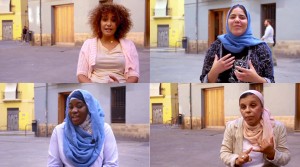
Subsequently, he was followed by a video exhibition “Short essays 18/19”, a selection of works by participants in the Master in Visual Arts and Multimedia at the Polytechnic University of Valencia during the 2018/2019 edition, by María José Martínez de Pisón and Cinema to Come, curated by Rubén Marín. It included works by Alejandra Flórez: Timeline (2019) 4’22”; Estefanía Díaz: no.name (2019) 5’35”; Alessia Maddalena: Who am I? Vol. 1 and 2 (2019) 5’50″; Silvia García Lluch: Essay 1935 (2019) 5’55”; Noelia Medina Fernández: After the water (2019) 4’37”; Sergio Cabrera: Post_Spaces, Cartographing from Analogies, Chapters I and II (2019) 8’30”; Valentina Jiménez: Where do we go while we sleep? (2019) 5’45”. It could be visited between October 24 and November 3, 2019.
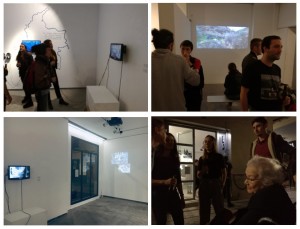 Bottom right M.Carmen, the protagonist of Essay 1935 (2019), by Silvia García Lluch, on the opening day at La Posta Foundation, October 24, 2019
Bottom right M.Carmen, the protagonist of Essay 1935 (2019), by Silvia García Lluch, on the opening day at La Posta Foundation, October 24, 2019
When presentations of a publication are made, they are usually extremely specific events: on May 18, 2019 Round table/Presentation of the fanzine of Women with a voice; on November 29, 2018 presentation of Concreta 12 curated by Cinema to Come, dedicated to Cinema to Come and neighboring territories; on December 18, 2017 presentation of The Pocket Chronicles of Carlos Maiques; On December 14, 2016 presentation of In[Clots], a publication generated by a group of students of the Master in Photography, Art and Technique of the Polytechnic University of Valencia (it would be the first collaboration with the Master in Photography, which would later expand with the LABi project), a work that shows graphic documents of the artistic intervention that took place on November 5, 2016 at the El Clot site in the El Cabanyal neighborhood, with the participation of neighbors. However, in contrast to this punctual nature of publication presentations, in this season the presentation of TROYANA$ by Papel Engomado (the magazine-object that has a pack of cigarettes as its container) transformed the editorial presentation format, converting it in an exhibition cycle from December 14 to 20, 2019, which included performance, video, performance record, conferences; with works by Yolanda Benalba, Andrés Senra, Ars Mágica, INVASORIX, Manu López, Nadia Granados, Felipe Rivas San Martín; an exhibition cycle by M Reme Silvestre, Estefanía Salas and Joaquín Artime.
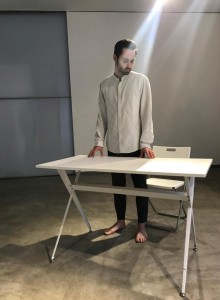
 Manu López, Dilemma (2019), performance
Manu López, Dilemma (2019), performance
When the Christmas festivities arrived, La Posta was closed, but the artistic activity continued on the street, with arcades of light typical of those dates of consumer frenzy, although with altered content: “The spoil illuminates our cities”; a realization by Beatriz Millón, who relates the light of the bulbs with the activity of the companies that exploit natural resources for the production of electrical energy through procedures that are often unsustainable. The artistic intervention in the street was contextualized with the exhibition in the La Posta showcase (which can be visited by the public 24 hours a day, 7 days a week), of vestiges and documentation of previous interventions by Beatriz Millón also on electrical energy and its light materiality: “Neocolonialism”, 2017, Unión Hidalgo, Istmo de Tehuantepec, México; and “Light is a privilege”, 2018, dock workers’ housing block, El Cabanyal, Valencia (the latter we had the opportunity to see it in all its materiality the previous season in the framework of the exhibition “Feminist Tracks” organized by the LABi 03 team). With the work “The spoil illuminates our cities” Beatriz Millón closes this cycle of actions and interventions with electricity and light that began in 2016.
For most of the season, tapping programming, a series of activities all revolve around the proposed theme raised —”is to investigate a kind of “revolution” that our image culture has always related to the feminine, with silent oppositional practices, but which do not for this reason cease to exert a certain invisible violence over space»,“Silence”, by Norberto Llopis, a program in collaboration with Miguel Angel Baixauli and La Posta Foundation within the cycle Variations on the plane, Curated by Juan Luis Toboso and Ángela Montesinos, from the IVAM Produce program line. The activities took place both in La Posta and in other private, public or street spaces. Particularly reflective was the action carried out in the Plaza de la Santa Cruz in the Carmen neighborhood, “Dis-use”. In “Dis-use”, a performer, making use of 100 folding wooden chairs, will silently write, on a square, different spaces, different ways of establishing the use, disuse or abuse of space. “Des-use” is an action or a sculpture in movement, an urban choreography, an action of indeterminate duration, which will carry out previously planned transformations in space. In the same series also participated Paula Valero Comín “Put in question”, Rafael Tormo Cuenca “IP29 incidental opera” and Vicente Arlandis “Full Frontal”, the latter a performance broadcast live on Facebook (on April 26, in full confinement), includes at the end a cinematic drift that causes surprise (a veiled reference to “L’Embassade” 1973, Chris Marker).
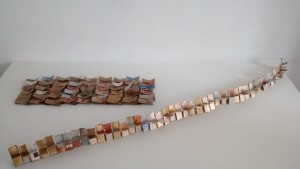 Choreographing in La Posta Foundation the “Dis-use” that would later take place in the Plaza de la Santa Cruz
Choreographing in La Posta Foundation the “Dis-use” that would later take place in the Plaza de la Santa Cruz
After the Christmas period “Between the visual and the sound. Reappropriation of matter and material”, an assemblage of works by Joan Gómez Alemany characterized by a strong desire for a holistic understanding of different means of expression and communication. In this way, a transdisciplinary vision of the subject matter of artistic work is adopted (which goes beyond the multidisciplinary to achieve transdisciplinarity, incorporating a sociological perspective). An exhibition that incorporates three media: cinema – moving image (which in turn combines sound, music and photography); sound (and music); and photography – a still image, but projected and also combined with the music that is heard in the room. The three media are interconnected and in turn are independent. Despite the traditional separation between the visual and the sound in the field of art, the joint phenomenon of vision and sound can be approached in an integrated way, and with variable approaches. In the exhibition, some scores intervened by Joan Gómez through graphics of a very powerful plastic, which show the visual transcription of music written with classical notation, by means of a system of visual signals that applies the different colours in function of the results obtained by psychological studies on their significance in relation to the sounds we hear. This is not the only transcript. There are more transcriptions in the scores shown, because electroacoustic compositions usually written in electronic notation have also been transcribed, now to classical tonal music notation. The musical notation itself is a transcription from the sound to the visual (like all written languages that transcribe speech into an image). Observed by Carmen Pardo that it is the tempo that characterizes the work, which we can transpose in the context of the exhibition as the small fissure that opens between image and sound, only noticeable at great distances, cosmic?; It seems as if it were this factor that Carlos Maiques knew how to portray in the drawing she made of Joan Gómez on the day of the inauguration; and the one also collected by Sandra Schwaighofer, in the curatorial text that accompanied Olga Neuwirth’s work, «…miramondo multiplo…» (2007), exhibited at Documenta 12, Kassel, with which the work of Joan Gómez has concomitances: “The various fragmentary elements are like stars, each star exists in its own right, it has its fixed position in the atlas of life, but when taken together they form an arrangement of constellations, displaying before us the fragility of the thought and writing of the artist in the context of his existence and creative process. However, his universe does not vanish into infinity” (Sandra Schwaighofer). A whole set of coincidences?
And we come to the 4th edition of LABi, the project of the Master in Photography, Art and Technique of the Polytechnic University of Valencia in collaboration with La Posta Foundation. This year a program of activities located in “The Apartment” installed in La Posta, which includes actions, residencies, performance, exhibitions, image and sound. As they are a type of action derived from a certain conceptual and minimal art —in that they emphasize the intervention of the public, who with their physical presence and not just their gaze would end up giving meaning to the work—, the documentation of these actions is of notable interest, at which point photography plays an important role. In this sense, it is necessary to highlight, among the actions developed in “The Apartment” the case of “Laundry”, which has left behind a good number of images, loaded with a very powerful plastic, which at some point recalls the social realism practiced by Antonio Fillol himself, who gives his name to the street where the events took place; to which must be added a succession of happenings that have included music, a dark room, and, in some cases (in some of the actions carried out), a nihilism in accordance with the theoretical framework in which the entire program takes place.
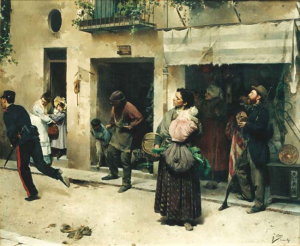 “Catch it” (1894), Antonio Fillol
“Catch it” (1894), Antonio Fillol
 “Praise the oranges that grew in the sun and saw you go (you can come to my house whenever you want)”, Olalla Hidalgo Gómez
“Praise the oranges that grew in the sun and saw you go (you can come to my house whenever you want)”, Olalla Hidalgo Gómez
The complete program of LABi 04 “The Apartment”:
- January 31, 2020 “Ruin drill1”, Eduardo VD.
- February 8, 2020 “I’m here”, Talegos.TK.
- February 15, 2020 “No matter how many colors that bouquet has, I don’t want those flowers”, Alvaro Porras Soriano.
- February 29, 2020 “Laundry”, Elena Sanmartín, Pau Olmo and Pau Mendoza.
- March 7, 2020 “Praise the oranges that grew in the sun and saw you go (you can come to my house whenever you want)”, Olalla Hidalgo Gómez.
- April 13, 2020 Online (a covert residence registered at La Posta Foundation on March 4, 2020 behind closed doors), “5h 58’ 27’’ DSC_7163″, Meritxell Ahicart.
- April 18, 2020 Online (residence not located) “Afterlife After Eight”, Moliana Mundi.
Suddenly COVID-19 broke into our lives. All paralyzed, confinement, anxiety and one of the rainiest springs we can remember (particularly in the Montnegre valley and the Alicante vegetable plot). When you start to react, everyone turns to the internet and social networks. At that time the online exhibition “Coronavirus, fear and courage”, with network resources and designed for the network. Even one of the residences of “The Apartment” of the LABi 04 team, which had been pending, is converted into a “dislocated residence” “Afterlife After Eight”, in which the guest artist Moliana Mundy, if spaces had previously been moved private intimates to the public space of art, now from the intimate space of confinement an artistic action is turned over on Instagram @labimasterfoto.
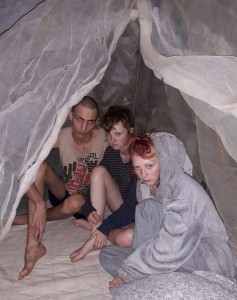 “Afterlife After Eight”, Moliana Mundy
“Afterlife After Eight”, Moliana Mundy
Likewise, an exhibition in preparation, entirely made up of video, is turned on the internet: “Essay”, with works by Maria Ciocnadi “Create meaning”; Clara Cañellas “Defective Look”; Pepe Reyes “Perverse Narcissus”; Alba Ramos “RITual”; Pedro Bella “Captured”; and Pablo Oria “Board Games”. The works presented are part of the practices carried out in the Audiovisual Essay subject, of the Master in Visual Arts and Multimedia of the Polytechnic University of Valencia, developed during the 2019-2020 academic year, by María José Martínez de Pisón. As in previous years, the audiovisual essay had started out as a means of critical reflection and research support. Also, as in previous years, Miguel Ángel Baixauli was a visiting professor to encourage a little the critical approach of the works, and to continue insisting on his commitment to “develop collective filmic learning processes” (Baixauli nd), but shortly after starting those practices, nothing was like in previous years. Due to the confinement, some works had to be rethought out of material necessity or personal choice. It was no longer possible to conduct interviews on the street to capture the pulse of the neighborhood and they had to focus their ears and eyes on the subjective perception of the situation; Other works, for which the authors had their own means and material, preferred to maintain their initial focus. A selection of those works was shown as an online exhibition on La Posta Foundation website.
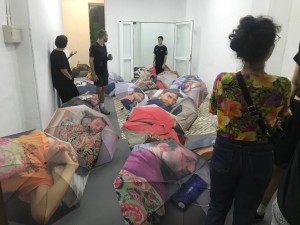 A10, Paul Barsch y Tilman Hornig
A10, Paul Barsch y Tilman Hornig
Exhausting the possibilities of tip over projects on the network, one that was planned for the following season “Current Art in València”, a kind of documentation work of the activity carried out by other entities and groups that we understand related to La Posta, such as the case of A10 [C/ Azcárraga, 10, a space run by Agency 17: Ali A. Maderuelo and Julia Castelló] and Pols [C/ Francisco Moreno Usedo 23, made up of Paula García-Masedo (Madrid), Carles Angel Sauri (Valencia) and Néstor García Díaz (Berlin)], “Current art in València” put an end to this trial that sought to transfer the activities that we had been developing, up to now, in person in the La Posta space ; a strategy in which many had put their effort, and whose results cannot be evaluated without referring to a certain frustration in view of the unsatisfied objectives, in the midst of a saturation of the network offer, which made many they will move away, looking for a reunion with the solitary and silent nature.
At that point, we began a process of reconsideration about the role that La Posta could play in the new context of the pandemic, with the limitations of capacity, social distance, etc., which, as it lasts over time, will end up leaving a mark on thought and in behaviors, we do not know if irreversibly. But that is the matter of the new 2020-2021 season, which has to be defined.

